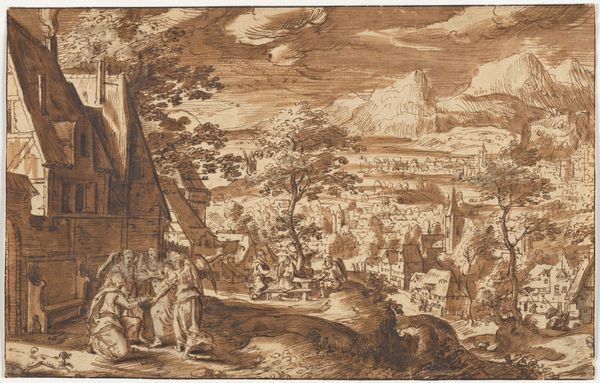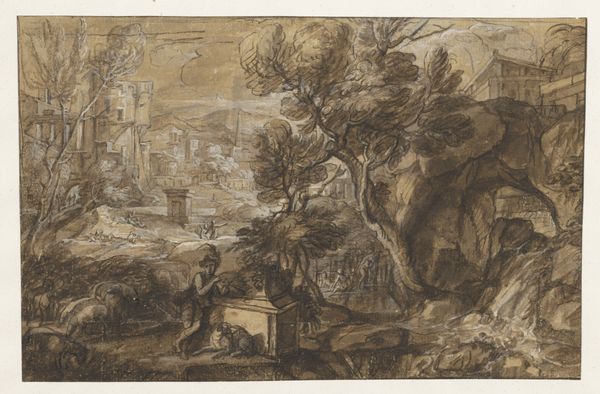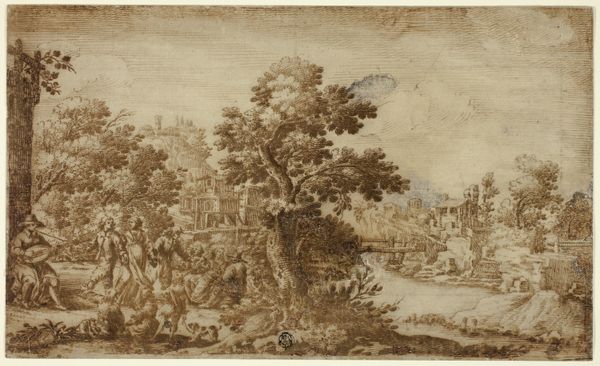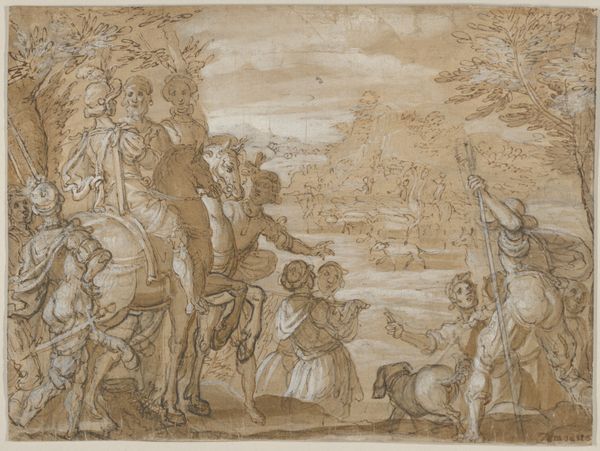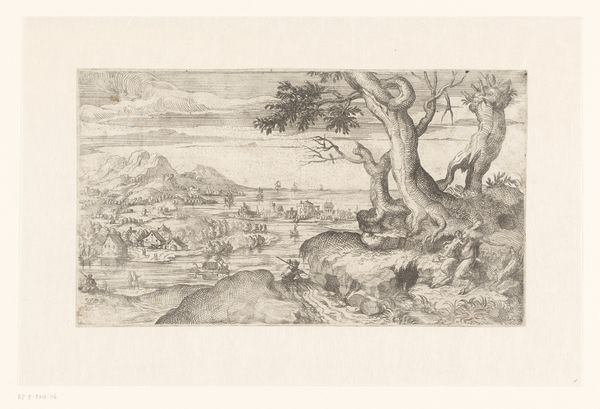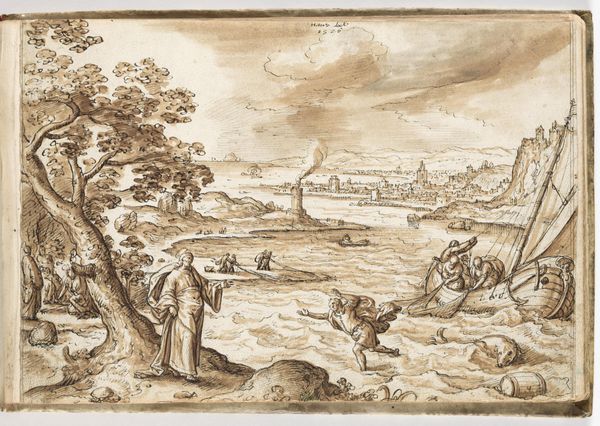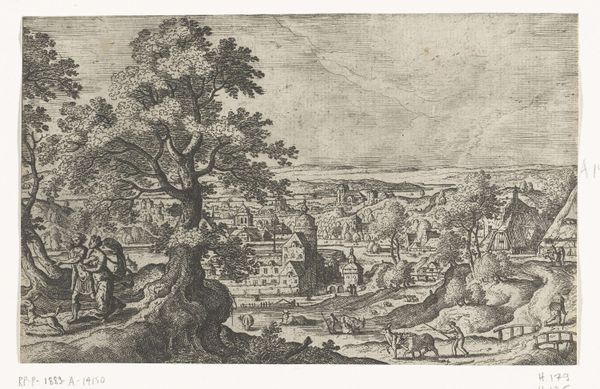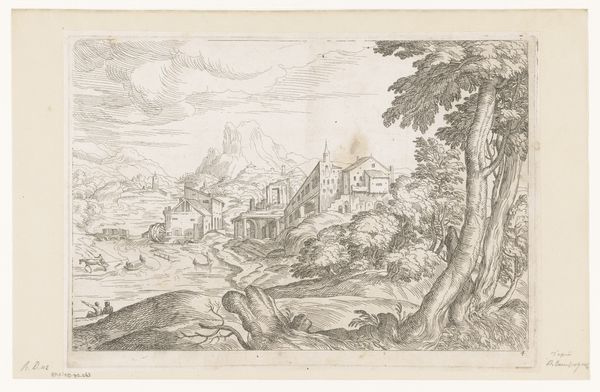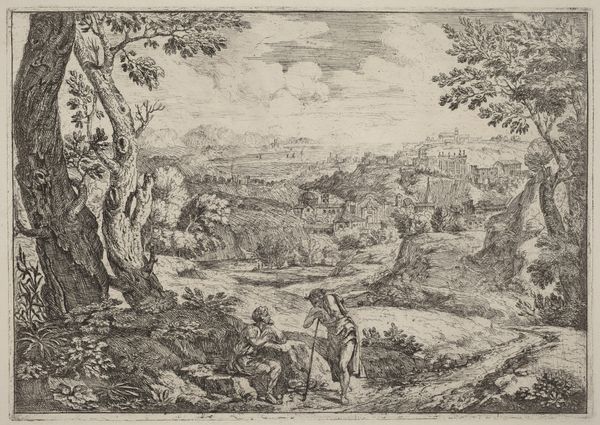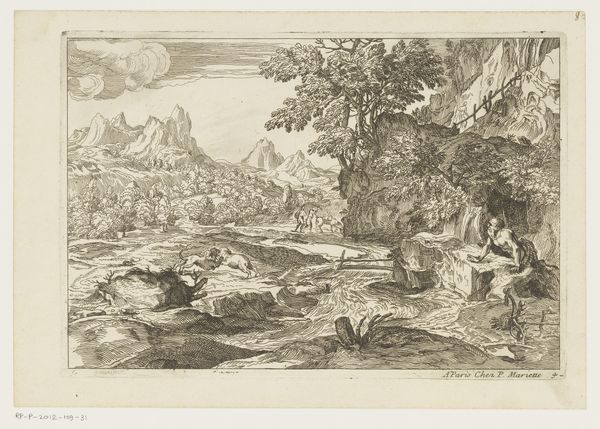
Huntsmen and Company Observing Dogs Retrieving Ducks in a Pond (The Month of April) 1605 - 1625
0:00
0:00
drawing, print, ink, pencil
#
drawing
#
baroque
#
ink painting
# print
#
dog
#
landscape
#
figuration
#
ink
#
pencil
#
horse
#
men
#
genre-painting
Dimensions: sheet: 8 3/4 x 12 3/8 in. (22.2 x 31.5 cm)
Copyright: Public Domain
Curator: Let’s consider Pieter Stevens' drawing, "Huntsmen and Company Observing Dogs Retrieving Ducks in a Pond (The Month of April)," created sometime between 1605 and 1625. What strikes you immediately? Editor: A sort of hazy calm. The muted colors, mostly ink and pencil, evoke a peaceful scene. There's a bucolic, almost melancholic feel to it. It seems very grounded in depicting a particular type of seasonal labour. Curator: Absolutely. I see it as a visual document reflecting hierarchies within the historical hunting context. Note the company observing the retrieving dogs; class and access to leisure defined who participates and how. Consider how access to natural spaces and the very act of hunting can become charged with questions of privilege, ownership, and control. Editor: I am drawn to the symbolism of water, in this piece. Water is often a symbol of purification, change, and transition, and the dogs swimming actively points to themes of loyalty, service and the relationship between humans and animals. Dogs often become emblems of class too. Curator: True, and look closer. The layered perspective seems intentional. From the architecture to the groupings of figures at different depths – consider how that positions the viewer in relation to power. The activity unfolds before us. Are we passive observers, or implicated in the dynamics shown? Also, this idyllic image potentially elides labour and its implications for those involved, in a way that deserves unpacking. Editor: I agree. There are also underlying symbolic representations, potentially nodding toward themes around nature, dominance, and even spirituality that need decoding within their era. It is important to observe how the imagery operates across social classes, offering different narratives depending on who is engaging with this work. Curator: Precisely. And in thinking about it today, how do these symbols of recreation intersect with our understanding of ecology, climate crisis, and ethical engagements with the non-human world? What is 'nature' itself within systems of oppression? Editor: Indeed. Ultimately, Stevens' image gives a view into 17th-century society, which prompts broader inquiries around cultural identity. Curator: And about what cultural remnants still permeate today. Thank you. Editor: Thanks to you, as well.
Comments
No comments
Be the first to comment and join the conversation on the ultimate creative platform.
